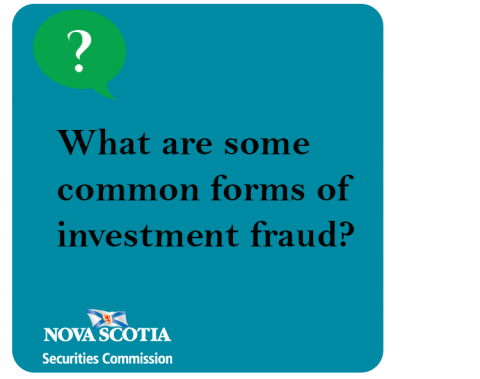Submitted by nsscadmin on

Last year during March we ran an extensive series on investment fraud, outlining common types of investment frauds, the red flags to watch for, and what to do if you think you are a victim of investment fraud. With March being Fraud Prevention Month, it’s the perfect time to deliver a quick review of investment fraud while also pointing you back to some of our older posts.
Investment fraud involves some form of deceit or dishonesty to separate an investor from their money. Fraudsters and scam artists will use any trick they can to get your hard-earned money. You don’t need to be wealthy to be the target of an investment scam. One-third of all fraud victims lose less than $1,000, and another 27 per cent lose between $1,000 and $5,000.
What are some of the more common forms of investment fraud?
Affinity Fraud is any scam that preys upon the members of an identifiable group. This could be a religious or ethnic community, a group of professionals, the elderly or even the members of a club or association. Fraudsters use the trust they’ve built up within the community or group to make a fraud or scam appear legitimate.
In a Ponzi scheme the fraudster promises large returns for low to no risk. They lure and trap their victims by appearing to, or in some cases actually delivering on their promises early on. However, there is no legitimate investment being made by the fraudster. They instead pay the promised returns using money invested. This could be the investors own money, or money collected from others who invested after them. The fraudster continues to pay investors with their own money and other investors money until the new money runs out. They may also talk Investors into reinvesting their returns so they don’t need to provide them with any money, just fake or made-up statements to convince investors that their hard earned money is doubling, tripling or quadrupling quickly. All the while, the fraudster is living the high-life using investors’ money – buying vehicles, jewelry, vacations, homes and many other luxury items. All Ponzi schemes eventually implode. New money stops coming in and the Ponzi scheme collapses leaving the investor with nothing but fake statements for an investment that never existed.
Boiler Rooms cold call or email potential investors to pressure them into buying shares in what is usually a private company or thinly traded over the counter stock.. The company is usually doing business in an industry that is in the news, such as gold, oil, or these days cryptocurrencies. The catch is the company doesn’t actually exist or have any real business . The caller directs investors to fake websites, social media accounts, or sends fake advertisements or offering documents. Investors are promised huge returns and these fraudsters use aggressive sales tactics to get you to invest. Once they have your money they’ll disappear, and you’ll likely never see or hear from them or your money again.
Advanced Fees:
In order to convince investors not to report their losses, fraudsters will try to convince investors to give up more money in hopes of recovering investment losses due to the Ponzi, affinity fraud of boiler room schemes. They use the deception that they can recover the lost investment funds if investors provide fees in advance. In addition, they provide investors a false sense of hope that they will get their money back when in the end it is a ruse to get more money.
